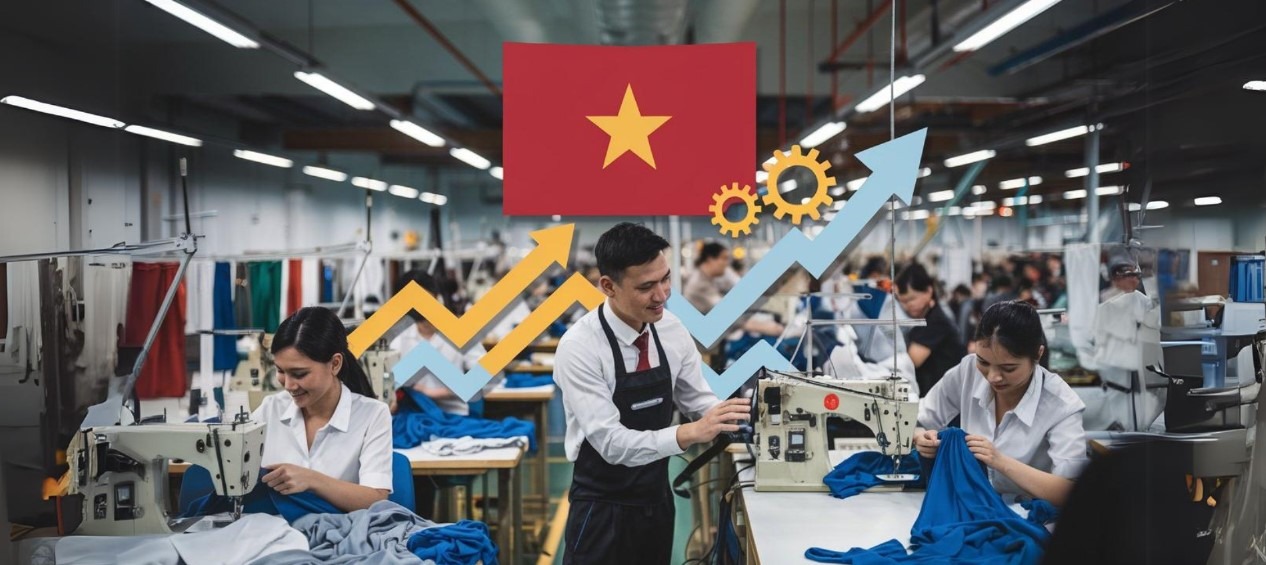Vietnam’s garment industry has been a pivotal force in the global textile and apparel market, emerging as one of the top three largest apparel exporters worldwide. In 2023, the industry achieved an export value of over $40 billion, and the forecast for 2024 aims even higher, with targets set at $44 billion. Despite this remarkable growth, the sector faces significant workforce challenges, most notably a high employee turnover rate that threatens its long-term sustainability. With over 2.5 million workers employed in this sector, addressing these challenges is a priority and necessary for maintaining Vietnam’s competitive edge.
The High Cost of Turnover
Employee turnover is costly for any industry, but the impact is particularly pronounced in the labor-intensive garment sector. Replacing a single employee can cost up to 30% of their annual salary, considering recruitment, onboarding, and training expenses. Moreover, high turnover disrupts production schedules, increases error rates, and lowers overall productivity, all of which negatively impact profitability.
As Vietnam’s garment industry transitions from a low-cost production model to one focused on higher value-added manufacturing, retaining skilled workers is more crucial than ever. The inability to retain talent not only hampers operational efficiency but also undermines the sector’s ability to innovate and move up the value chain. In this context, developing and implementing effective employee retention strategies becomes a critical component of long-term success.
Competitive Compensation and Benefit Packages
One of the primary drivers of employee turnover in Vietnam’s garment sector is inadequate compensation. The industry has traditionally relied on low labor costs to remain competitive globally. However, rising inflation and the increasing cost of living have made it difficult for workers to sustain themselves on stagnant wages. For instance, the average monthly wage in the garment sector ranges from $200 to $300, which often struggles to keep pace with inflation, recorded at 3.15% in 2023.
To mitigate this, garment manufacturers must implement regular salary reviews that align with inflation. For example, offering annual raises based on inflation rates can help workers cope with rising living costs. Additionally, enhancing benefits packages by providing health insurance, transportation allowances, or meal stipends can significantly improve job satisfaction. These measures not only address the financial stress workers face but also contribute to a more motivated and loyal workforce.
Moreover, businesses can explore innovative compensation models that reward performance and loyalty. Implementing bonus schemes or profit-sharing arrangements can create a direct link between an employee’s contribution and their compensation, fostering a stronger commitment to the company’s success.
Investing in employee well-being
In addition to competitive compensation, investing in employee well-being is a crucial strategy for improving retention. The garment industry is labor-intensive, with many workers performing physically demanding tasks in challenging conditions. Without proper attention to their well-being, workers are more likely to experience burnout, leading to higher turnover rates.
To address this, employers can make ergonomic improvements in the workplace. For instance, better seating, adjustable workstations, and modernized equipment can reduce physical strain on workers, leading to fewer injuries and greater job satisfaction. Additionally, promoting work-life balance by introducing flexible work arrangements or redesigning production shifts can help workers manage their personal and professional lives more effectively.
Health and safety initiatives are also critical. Ensuring that factories meet stringent health and safety standards can prevent workplace accidents and reduce absenteeism. By prioritizing these aspects of employee well-being, companies can create a healthier, more supportive work environment that encourages workers to stay for the long term.
Building Career Pathways
A significant challenge in Vietnam’s garment sector is the lack of clear career advancement opportunities. Many skilled workers find themselves hitting a career ceiling early, with limited options for moving into management roles or other higher-paying positions. This lack of upward mobility is a major factor contributing to high turnover rates.
To counter this, companies should invest in creating clear career development plans that map out potential promotion paths for skilled workers. This can include identifying key competencies required for higher-level roles and providing the necessary training to develop these skills. For example, companies can offer internal training programs or partner with educational institutions to provide courses that align with industry needs.
Additionally, upskilling programs can enable workers to acquire new skills that increase their employability and qualify them for more advanced roles within the company. Research shows that businesses offering professional development opportunities report a 34% higher retention rate compared to those that do not. By investing in their employees’ growth, companies not only improve retention but also build a more skilled and versatile workforce.
Fostering a Positive Work Culture
Work culture plays a significant role in employee retention. In many cases, workers leave not because of inadequate pay or lack of opportunities but because of dissatisfaction with the work environment. A positive work culture characterized by respect, fairness, and open communication can greatly enhance employee satisfaction and loyalty.
Building such a culture starts with fostering open communication between management and staff. Regular feedback loops, such as quarterly surveys or town hall meetings, can ensure that employees feel heard and valued. Additionally, implementing recognition programs that celebrate outstanding performance can boost morale and encourage employees to stay with the company.
For instance, “Employee of the Month” initiatives or bonuses for top performers can make employees feel appreciated for their contributions. Moreover, promoting a culture of respect and fairness where management adheres to principles of equality and inclusivity can create a sense of belonging that is integral to long-term employee retention.
Groyyo’s role in addressing retention challenges
Groyyo is uniquely positioned to help Vietnam’s garment sector overcome its pressing employee retention challenges. With its deep expertise in operational optimization, workforce management, and innovative solutions, Groyyo can play a transformative role in improving working conditions, enhancing employee satisfaction, and fostering long-term loyalty within the workforce.
- Competitive Compensation and Benefits
Groyyo’s consulting services can help garment manufacturers design data-driven compensation models that keep pace with inflation while maintaining competitiveness. By identifying areas of cost savings within production processes, Groyyo enables companies to reinvest those savings into competitive wages and attractive benefit packages. For example, optimizing production workflows or reducing material waste can free up resources to offer better compensation without significantly impacting profitability.
- Investing in employee well-being
Groyyo’s employee engagement solutions emphasize the importance of work-life balance and workplace safety, both of which are critical to retention in the garment sector. By working with manufacturers to redesign production shifts, introduce flexible work arrangements, and improve the physical environment in factories, Groyyo can help create a healthier and more supportive workplace. The company’s experience with industrial engineering allows for ergonomic enhancements that reduce strain on workers while increasing productivity.
- Building Career Pathways
One of the core challenges in Vietnam’s garment sector is the lack of career advancement opportunities. Groyyo offers solutions tailored to workforce development, providing insights on implementing clear career progression frameworks. Through customized training programs and upskilling initiatives, Groyyo helps businesses foster internal talent, allowing workers to advance into higher-skilled, better-paying roles.
- Fostering a Positive Work Culture
Groyyo’s expertise in creating transparent communication channels and recognition systems can help garment manufacturers foster a positive and inclusive work environment. By implementing employee feedback mechanisms, Groyyo ensures that workers feel heard and valued, which is essential for building loyalty. Additionally, Groyyo can guide businesses in setting up recognition programs that reward outstanding performance and promote a culture of respect and fairness.
Conclusion
The retention of skilled workers is critical to the ongoing success of Vietnam’s garment industry. By implementing competitive compensation, investing in employee well-being, creating career pathways, and fostering a positive work culture, the industry can effectively address its workforce challenges. Groyyo’s holistic approach—centered on operational excellence, employee well-being, and career development—can help businesses implement sustainable solutions that benefit both employees and employers, ensuring long-term success in a competitive global market.
This comprehensive approach not only enhances employee satisfaction and loyalty but also strengthens the overall competitiveness of Vietnam’s garment sector on the global stage.

Email- divyamohan@groyyo.com


Leave a Comment